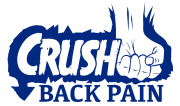Degenerative disc disease in NOT an actual disease. As humans age the discs change. The process is similar to skin becoming wrinkled with aging.
With aging the fluid content of the disc decreases, the discs bulge and herniate, there are small tears in the annulus fibrosus, osteophytes (bone spurs) form, and the disc space narrows.
Any of these findings or a combination of these findings are labeled as degenerative disc disease.
The changes in the disc during the aging process can and do cause pain, although they often times do not cause pain. Basically, people can have what’s labeled as “degenerative disc disease” and be pain-free.
Thirty years ago it was believed that disc degeneration was a disease that manifested in adulthood. Recent research has shown that disc degeneration starts within the first ten years of life and is usually apparent in most people by the time they are in their twenties.
Degenerative disc disease is not a disease, it’s a natural age related process that occurs over time in humans.
Recent research shows that genetic factors play a larger role in age related changes of the disc (“degenerative disc disease”) compared to physical loading during work or sports.
In the back pain world there is still the overwhelming belief that findings on imaging such as disc herniations, disc bulges, disc space narrowing, annular tears, and osteophytes have a predictable relationship to pain.
The past twenty to thirty years of medical research on back pain shows us the exact opposite. Significant disc degeneration can increase the chances of developing lower back pain. On the other hand there are many individuals with significant disc degeneration on imaging who have minimal to no symptoms.
If you have been labeled with degenerative disc disease you have a normal spine that shows age related changes. The same as anybody walking around without lower back pain.
References
Haefeli M, Kalberer F, Saegesser D, Nerlich AG, Boos N, Paesold G. The course of macroscopic degeneration in the human lumbar intervertebral disc. Spine (Phila Pa 1976). 2006 Jun 15;31(14):1522-31. doi: 10.1097/01.brs.0000222032.52336.8e. PubMed PMID: 16778683.
Battié MC, Videman T, Parent E. Lumbar disc degeneration: epidemiology and genetic influences. Spine (Phila Pa 1976). 2004 Dec 1;29(23):2679-90. doi: 10.1097/01.brs.0000146457.83240.eb. Review. PubMed PMID: 15564917.
Boos N, Weissbach S, Rohrbach H, Weiler C, Spratt KF, Nerlich AG. Classification of age-related changes in lumbar intervertebral discs: 2002 Volvo Award in basic science. Spine (Phila Pa 1976). 2002 Dec 1;27(23):2631-44. doi: 10.1097/00007632-200212010-00002. PubMed PMID: 12461389.
Videman T, Battié MC, Ripatti S, Gill K, Manninen H, Kaprio J. Determinants of the progression in lumbar degeneration: a 5-year follow-up study of adult male monozygotic twins. Spine (Phila Pa 1976). 2006 Mar 15;31(6):671-8. doi: 10.1097/01.brs.0000202558.86309.ea. PubMed PMID: 16540872.
Videman T, Battié MC, Parent E, Gibbons LE, Vainio P, Kaprio J. Progression and determinants of quantitative magnetic resonance imaging measures of lumbar disc degeneration: a five-year follow-up of adult male monozygotic twins. Spine (Phila Pa 1976). 2008 Jun 1;33(13):1484-90. doi: 10.1097/BRS.0b013e3181753bb1. PubMed PMID: 18475246.
FAQ
As humans age the discs change. The fluid content of the disc decreases, the discs bulge and herniate, there are small tears in the annulus fibrosus, osteophytes (bone spurs) form, and the disc space narrows. This is NOT an actual disease, simply part of the aging process of the spine.
Recent research shows that genetic factors play a larger role in age related changes of the disc (“degenerative disc disease”) compared to physical loading during work or sports.
90% of the time the best treatment is exercise. This may include walking, hip mobility training to reduce loads through the lumbar spine, and trunk stabilization training. Exercise and movement improve hydration of the discs and increase the strength of the ligaments, muscles, and tendons supporting the spine. Medication can be an effective tool for short-term pain relief, if needed. Surgery and injections are rarely indicated (less than 10% of cases).
You don’t need to cure something that is not a disease. But to keep your spine healthy naturally do the exact types of things you would to stay healthy naturally. Exercise and a clean, healthy, balanced diet are the keys. The exercise should focus on lumbar stabilization training and walking. The diet should focus on whole foods from plants and animals. Avoid sugary, processed foods as much as possible.
Due to the fact that “degenerative disc disease” is not actually a disease and the fact that genetic factors play a larger role compared to anything else in age related changes of the spine there is no “disease” to prevent. That said, exercise and a healthy diet will keep the discs strong and healthy.


